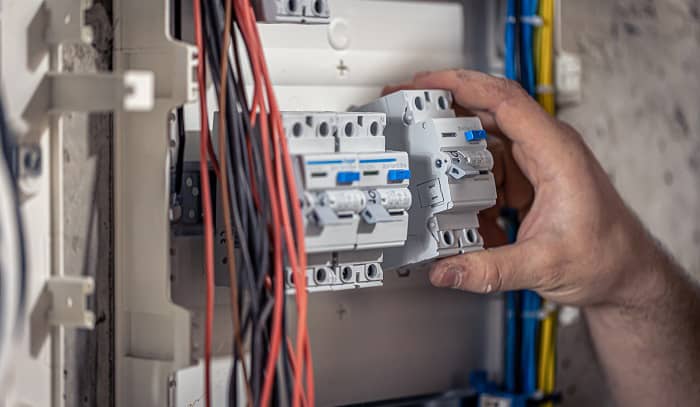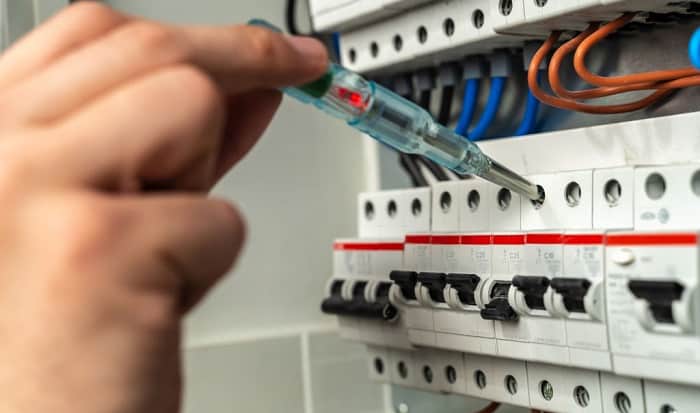Table of Contents
What is a plug on neutral breaker? Are you planning to install a plug on the neutral breaker in your house but want to know more about this type of device before doing it?
The plug-on-neutral breaker is a type of breaker you can connect directly to your neutral bar, thus negating the need for a pigtail connection. It’s almost the same as typical AFCI and GFCI breakers but isn’t compatible with most standard breaker panels.
Despite that, a plug-on-neutral breaker has many advantages over the usual breakers. Find out more about these below.
What Is a Plug on Neutral Circuit Breaker
A plug-on-circuit breaker is a specially designed AFCI and GFCI circuit breaker that doesn’t need a pigtail wire.
If you don’t know how to wire a plug on neutral breaker, you don’t need to worry as it’s effortless. You only need to clip the plug-on-neutral breaker to the neutral bar, connect the hot wire to the breaker; then you’re good to go.
However, you could only use a plug-on-neutral circuit breaker with a specially designed plug on neutral panel. That’s because these breakers have a specially designed clip that directly connects to the neutral bar. So if your breaker panel isn’t designed with a neutral bar that allows this, the plug-on-neutral breaker won’t fit.
The main advantage of a plug-on-neutral circuit breaker and panel over typical designs is that you save time. Instead of requiring a pigtail connection to connect your breaker to the neutral bar, it uses a clip that mounts directly to it.
That means the plug-on-neutral breaker installation could be as much as ten times faster over ordinary AFCI and GFCI breakers.
A plug-on-neutral breaker panel is also compatible with standard circuit breakers. So even if you don’t use special AFCI or GFCI breakers on all your circuits or want to reuse your old circuit breakers with pigtails, you’re free to do so.
For example, the Square D plug on neutral load center has neutral bars with spaces between screws so you can clip the plug-on-neutral circuit breaker on it directly. At the same time, if you’re using the standard breaker with a pigtail connection, you can use the spaces on the neutral bar to connect it.
This video, talking about the differences between plug-on and non-plug-on neutral breakers and panels, will give you a better understanding of the two systems. Watch how the expert differentiates the two, so you can see their differences for yourself.
Aside from its main advantage of a quick and easy install, here are some additional benefits of a plug-on-neutral breaker:
Additional Advantages of Plug On Neutral Breaker and Load Center
1. Clean and Professional Finish
A plug on neutral load center removes the need to have a pigtail wire connecting to the neutral bar. If you’re using many AFCI or GFCI breakers, this lets you have a cleaner load center with no mess or wire tangles.
This reduction of wires will let you have an easier time managing the cables, especially because you only have to deal with the hot wires connecting to each breaker. This also makes circuit identification much more manageable.
2. Safe Installation
A plug-on-neutral breaker frees up more space, allowing you to access your breaker panel better. Additionally, you no longer have to manually screw the neutral pigtail connection to the neutral bar, thus reducing the risk of a loose connection causing your GFCI or AFCI breaker to malfunction.
Watch this video by EatonVideos, which shows the features and benefits of plug-on-neutral breakers and breaker panels.
Conclusion
Having a plug-on-neutral breaker and breaker panel in your home makes circuit breaker installation a breeze. The plug-on-neutral innovation is a simple but effective way of removing the pigtail connection.
Now that you know ‘what is a plug on neutral breaker?’ and the type of panel it requires, you can check if you have compatible equipment and see if you can save time when installing a new circuit breaker.
So, does your home have a plug-on-neutral breaker panel? Are you now familiar with the differences between a plug on neutral vs pigtail breaker? Share your thoughts in the comments below!

I am Edwin Jones, in charge of designing content for Galvinpower. I aspire to use my experiences in marketing to create reliable and necessary information to help our readers. It has been fun to work with Andrew and apply his incredible knowledge to our content.


